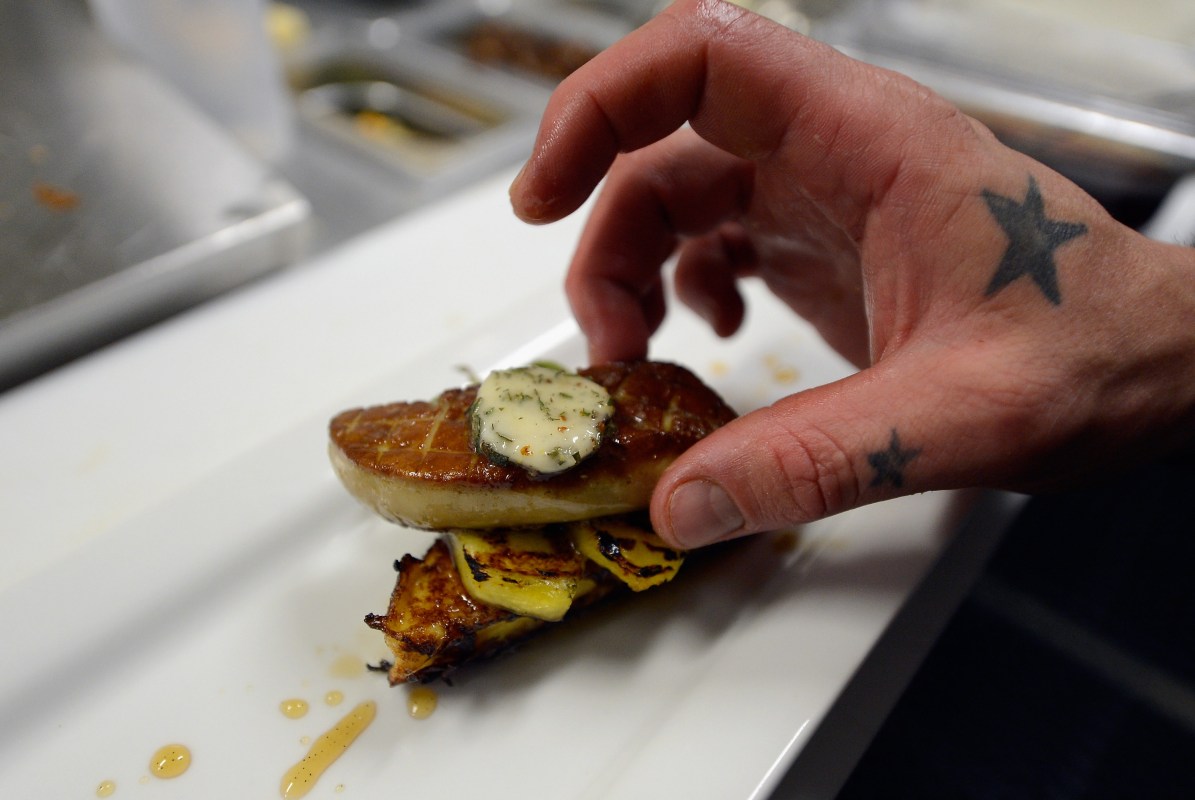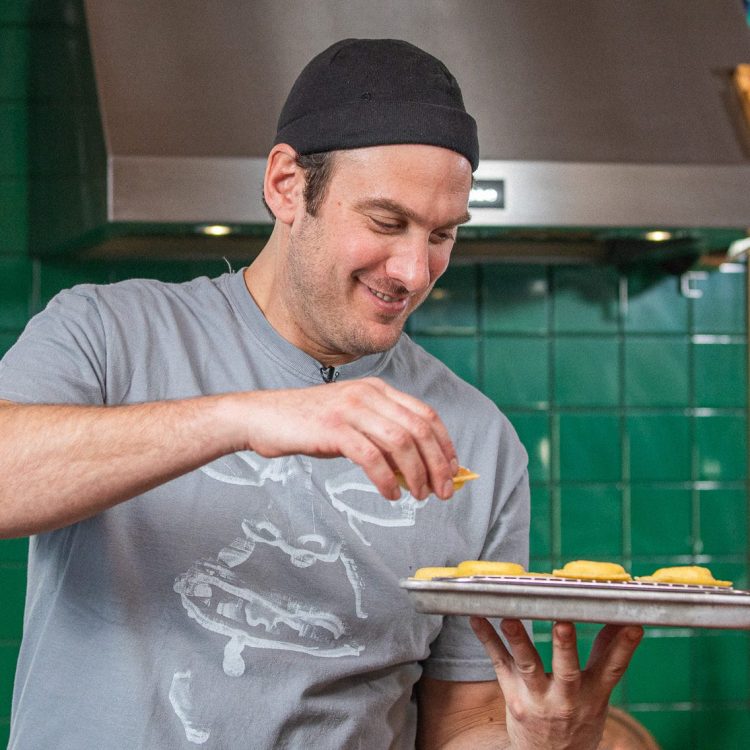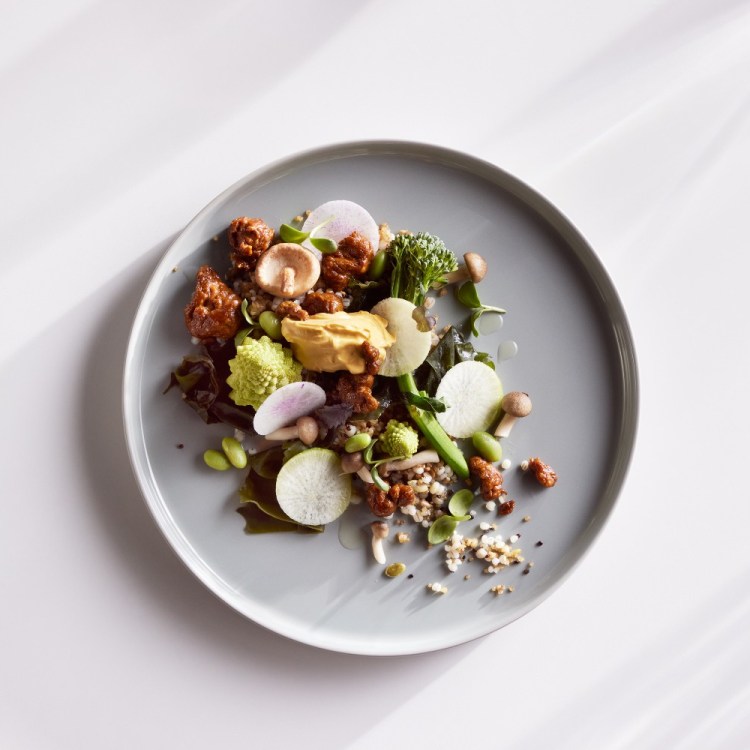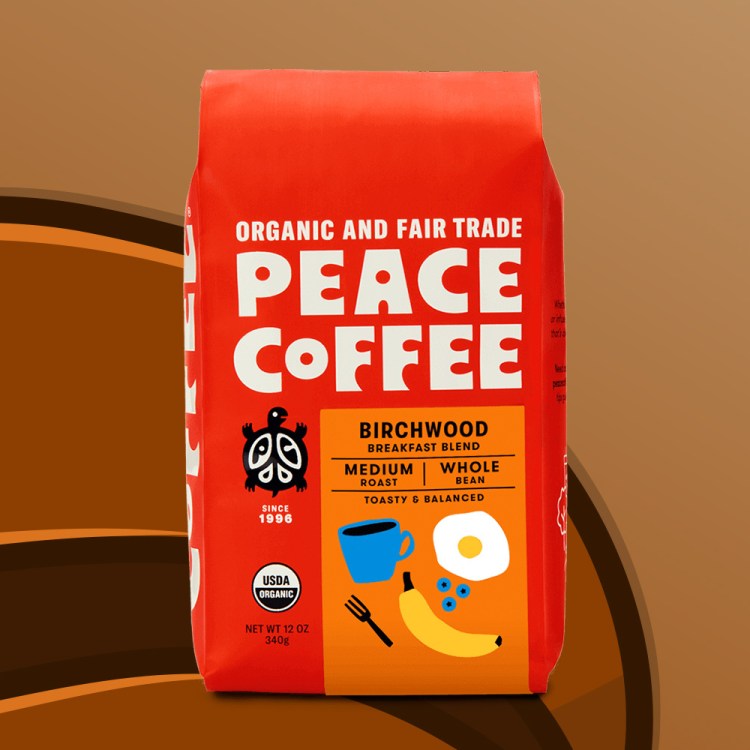From its highly controversial production methods to its status as a financially inaccessible luxury item, not even veal, shark fin soup or baconnaise has brought as many partisans to the culinary barricades as foie gras. For decades now, the production and sale of foie gras have served as inspiration for protests, boycotts, PETA fundraising letters, legal petitions and litigation. And last week, New York City joined California and India among a handful of places that have passed bans on the sale of foie gras.
Should New York’s new ban outlast its opposition, it will go into effect in 2022 and require 1,000 Big Apple restaurants that offer the dish to remove it under fear of civil penalty. “We are thrilled that the stain of foie gras has been removed from NYC and hope that many other cities will follow in its footsteps to end blatant animal abuse in the food industry,” said the president of one animal rights group following the bill’s passage in the New York City Council.
It would be both easy and natural to consider a ban adopted in America’s biggest city, its most populous state, as well as the world’s biggest democracy, to be a sign of a future to come, but when it comes to the fatty livers of ducks or geese, the politics aren’t just local, they are deeply conflicted. In the recent past, the cities of Chicago and São Paulo have both passed and repealed prohibitions on the sale of foie gras. Meanwhile, across much of Western Europe, the production of foie gras is prohibited, albeit in countries where it’s generally never been produced. (Its sale and importation there, however, remain legal.)
Then, of course, there’s France, which not only boasts the naming rights to the 4,500-year-old Mediterranean delicacy, but whose rural code declares that the comestible “belongs to the protected cultural and gastronomical heritage of France.” Indeed, news of New York City’s defection led one French foie gras advocate to perhaps ironically ask: “How can the country of the Statue of Liberty ban this healthy delicacy?”
To understand the controversy behind New York’s foie gras ban is to dwell within America’s spangle of contradictory passions: evangelism and self-determination, assimilation and purity, sanctimony and hypocrisy. While early appearance of foie gras in America can be traced to more than a century ago, the mainstreaming of foie gras in the United States started in the 1980s as part of the same globalized sophistication that brought sun-dried tomatoes, arugula and decent olive oil to the shelves. “You got this great food product that’s European, but the culinary world in New York City especially, wasn’t what it is today,” Marcus Henley explains to InsideHook of foie gras’s arrival. “People would look at these one-and-a-half pound white duck livers and ask, ‘What is that? Never heard of it.’”
Marcus Henley has skin in the game. As the manager of Hudson Valley Foie Gras, Henley helps oversee a cooperative of two farms that employ 400 (now-imperiled) workers in upstate New York. Foie gras is his trade and, despite operating in a county where the median income is halfway between the national average and the poverty line, Henley feels intimately connected to New York City’s ascendence in the global echelons of fine dining. “Only last week that restaurant Daniel was named the best restaurant in New York City and #21 in the world by TripAdvisor [polling],” he says. “And their signature dish? Tableside-prepared foie gras. So you’ve got the culinary reputation and we helped to build that with those farm-to-table superior ingredients for New York chefs.”
But what the foie gras also represents is not just the New York of Michelin stars, expense accounts and bone-colored business cards. It’s also an emblem for cultural transmission and culinary melding. “There are 1,000 restaurants [in New York] that have foie gras and not just the Daniels and the Jean Georges, but Jungsik, the Korean restaurant, and tapas places,” Henley adds. “You take that away and it’s like you take a painter and you’re telling him, ‘You’re not using blue anymore — it’s illegal.’”
Since the ban’s passage, New York City chefs have been increasingly direct about their feelings over the specter of prohibition, which targets a niche item, instead of industrial animal-processing operations whose extremely problematic practices affect the food system on a much larger scale. David Chang was one of the most vocal critics on Twitter:
“It’s literal election fool’s gold for the city councilman … essentially going after small time drug busts instead of doing the real hard work and building a case against drug lords,” the Momofuku impresario went on. “They just want to pad their stats. Stupid, short-sighted and a misunderstanding of the situation.”
The sentiment that the prohibition is either a case of too-selective targeting or of misplaced priorities leads back to Chicago, where foie gras was banned from 2006 until 2008. “I was working here when the ban went into place and I was working here when it was lifted,” Chris Curren, the executive chef at Fulton Market Kitchen, recalls. “I think the whole sentiment in Chicago at the time that the ban went through was that very few people even really cared. The sentiment from the consumer and from the restaurant world was more along the lines of ‘Hey, we’ve got a lot bigger problems going on in this city, why are you taking the time to ban something that people eat? Something that is thought of as a luxury item at that.”
Curren, whose restaurant frequently features foie gras, remembers chefs and kitchens laboring to find ways to skirt the prohibition. “I can’t remember exactly which restaurants were doing it,” he says, “but there’s at least one or two that posted a side of bread on the menu for like $26 and it came with a complimentary side of foie gras.” There are other cases of policy-minded subterfuge out there. At one high-end department store chain in London where foie gras was banned, liver seekers knew to ask for “French fillet” until a sting operation caught the black marketeers. Last year, Amazon settled a lawsuit in California over claims that it had flouted the state’s ban by delivering illicit orders placed online.
These stories hint at a foundational ideology that is well known in the U.S.: People hate being told what to do, especially by governmental bodies and regulators. Even in ostensibly liberal New York City, residents may fondly recall the defeat of a city ban on sugary drinks that exceed 16 ounces in size put forth by then-Mayor Michael Bloomberg. Arguably the winning tabloid headline (among many) after a judge struck down the ban hours before it was meant to go into effect goes to the Daily News: SUCK IT!
For chefs and consumer advocates alike, the path to successfully navigating the ethical mires of eating is to win a war of ideas rather than restrict the discourse. “Obviously, there are groups out there that are interested in the humane aspect of how animals are raised, especially the ones that are raised for food. And I respect that and I think the community respects that,” Curren says. “That being said, if people truly want to make a difference, the nice thing about living in a capitalist society is that you can vote with your wallet.”
Join America's Fastest Growing Spirits Newsletter THE SPILL. Unlock all the reviews, recipes and revelry — and get 15% off award-winning La Tierra de Acre Mezcal.
























